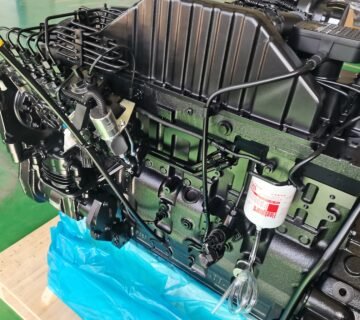How Cummins Reduced NOx Emissions Without Losing Performance
Cummins Inc., a global leader in diesel engine technology, has long faced a critical challenge: reducing nitrogen oxide (NOx) emissions without compromising the power, efficiency, and reliability that define its engines. Through innovative engineering, strategic partnerships, and advanced emission control technologies, Cummins has achieved remarkable success in balancing environmental responsibility with performance excellence. Here’s how they did it.

The NOx Challenge and Cummins’ Multi-Pronged Approach
NOx emissions from diesel engines contribute to air pollution and health risks, driving stringent global regulations like Euro VI and U.S. EPA Tier 4 standards. Cummins tackled this challenge through a combination of in-cylinder optimization and aftertreatment solutions, ensuring compliance without sacrificing engine output. Key strategies include:
- Selective Catalytic Reduction (SCR) Systems
Cummins integrated SCR technology into its engines to break down NOx into harmless nitrogen and water. By injecting urea (DEF) into the exhaust stream, SCR systems achieve up to 96% NOx reduction while maintaining fuel efficiency. For instance, Cummins’ CES (Cummins Emission Solutions) division developed SCR systems tailored for diverse applications, from heavy-duty trucks to industrial generators, ensuring compatibility with global emission standards.
- Cooled Exhaust Gas Recirculation (EGR)
By recirculating cooled exhaust gases into the combustion chamber, Cummins’ cooled EGR systems lower peak combustion temperatures—reducing NOx formation by up to 50%. This technology, combined with precise turbocharging innovations, ensures optimal air-fuel ratios for cleaner combustion and sustained power output.
- Advanced Particulate Filters (DPF)
Cummins’ Diesel Particulate Filters (DPF) trap and oxidize soot particles, complementing SCR and EGR systems to meet ultra-low PM (particulate matter) limits. These filters are designed for minimal backpressure, preserving engine efficiency.
Turbocharging and Fuel System Innovations
Cummins’ Holset® turbochargers play a pivotal role in balancing emissions and performance. By optimizing airflow and combustion dynamics, these turbochargers enhance fuel efficiency while supporting higher power densities. For example, the 2025 Ram Heavy Duty’s redesigned 6.7L Cummins Turbo Diesel delivers 1,075 lb-ft of torque—a 10% increase over previous models—while meeting stricter emission targets.
Additionally, Cummins’ high-pressure common rail fuel systems (up to 2,600 bar) ensure precise fuel injection, minimizing unburned hydrocarbons (HC) and improving thermal efficiency.
Alternative Fuels and Hybrid Solutions
Cummins has expanded its focus beyond traditional diesel to lower-carbon fuels, including biodiesel and renewable diesel. Most post-2007 Cummins engines support B20 biodiesel blends, which reduce lifecycle greenhouse gas emissions by 15% without requiring major modifications. For fleets prioritizing drop-in compatibility, renewable diesel (HVO) offers near-zero NOx and PM emissions while maintaining energy density.
Research into ternary fuel blends (e.g., biobutanol-biodiesel-diesel) further demonstrates Cummins’ commitment to innovation. A 2023 study showed that optimized blends with ZnO nanoparticles reduced NOx by 25% while improving brake thermal efficiency.

Real-World Applications and Global Impact
Cummins’ emission technologies are validated across industries:
– Power Generation: SCR systems for biogas engines at waste-to-energy plants reduce NOx by 95%.
– Transportation: The 2025 Ram Heavy Duty’s Cummins engine achieves a 36,610-lb towing capacity with EPA-compliant emissions.
– Industrial Partnerships: Collaborations with BASF and thyssenkrupp Uhde enhance catalyst durability and system integration, as seen in Covestro’s Shanghai plant, where NOx levels fell below 1 ppm.
Future-Proofing with Multi-Fuel Platforms
Cummins’ HELM™ engine architecture exemplifies its forward-thinking approach. Designed for flexibility, HELM™ supports diesel, natural gas, hydrogen, and hybrid configurations, enabling seamless transitions to cleaner fuels. This aligns with Cummins’ Destination Zero strategy, which aims for net-zero emissions by 2050 through phased adoption of low-carbon technologies.
Conclusion
Cummins has proven that reducing NOx emissions does not require compromising performance. By integrating SCR, EGR, and DPF systems, optimizing turbocharging and fuel delivery, and embracing alternative fuels, Cummins engines deliver both power and sustainability. With global partnerships, rigorous R&D, and platforms like HELM™, Cummins remains at the forefront of the clean energy transition—proving that environmental responsibility and industrial productivity can coexist.

For businesses seeking to reduce emissions without sacrificing reliability, Cummins’ solutions offer a blueprint for success.





No comment